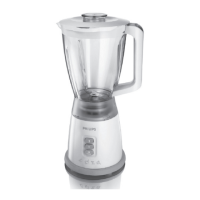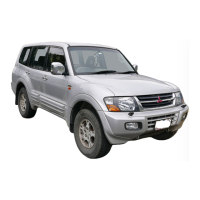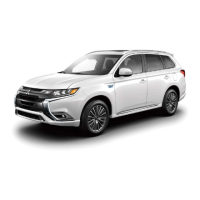2D-20 Chapter 2 Part D
General engine overhaul procedures
15.4a Measure the diameter of each cylinder just under the
wear
rfdge (A), at the center (8) and at the bottom (C)
_
15.4b The ability to “feel” when the telescoping gauge is at
the correct point will be developed over time, so work slowly
and repeat the check until you’re satisfied the bore
measurement is accurate
15.4~ The gauge is then measured with a micrometer to
determine the bore size
2
Visually check the block for cracks, rust and corrosion. Look for
stripped threads in the threaded holes. It’s also a good idea to have the
block checked for hidden cracks by an automotive machine shop that has
the special equipment to do this type of work. If defects are found, have the
block repaired, if possible, or replaced.
3 Check the cylinder bores for scuffing and scoring.
4 Measure the diameter of each cylinder at the top (just under the ridge
area), center and bottom of the cylinder bore, parallel to the crankshaft
aXiS (see ifhJStrat~OnS).
Note:
%X8
m8aSUr8m8nfS ShOddnOfb8 made
wifh the bar8 block mounted on an engine stand - fhe cyknders will be dis-
torted and the measurements will be inaccurate.
5 Next, measure each cylinder’s diameter at the same three locations
across the crankshaft axis. Compare the results to this Chapter’s Specifi-
cations.
6
ff the required precision measuring tools aren’t available, the piston-
to-cylinder clearances can be obtained, though not quite as accurately,
using feeler gauge stock. Peeler gauge stock comes in 12-inch lengths
and various thicknesses and is generally available at auto parts stores.
7 To check the clearance, select a feeler gauge and slip it into the cylin-
der along with the matching piston. The piston must be positioned exactly
as it normally would be. The feeler gauge must be between the piston and
cylinder on one of the thrust faces (go-degrees to the piston pin bOr8).
8 The piston should slip through the cylinder (with the feeler gauge in
place) with moderate pressure.
9 If it falls through or slides through easily, the clearance is excessive
and a new piston will be required. If the piston binds at the lower end of the
cylinder and is loose toward the top, the cylinder is tapered. If tight spots
are 8nCOUnt8r8d as the piston/feeler gauge is rotated in the cylinder, the
cylinder is out-of-round.
10 Repeat the procedure for the remaining pistons and cylinders.
11
If the cylinder walls are badly scuffed or scored, or if they’re out-of-
16.3a A “bottle brush” hone will produce better results if you’ve
never honed cylinders before
round or tapered beyond the limits given in this Chapter’s Specifications,
have the engine blockrebored and honed at an automotive machine shop.
lf a rebore is done, oversize pistons and rings will be required.
12 If th’e cylinders are in reasonably good condition and not worn to the
outside of the limits, and if the piston-to-cylinder clearances can be mafn-
tained properly, they don’t have to be rebored. Honing is all that’s neces-
sary (see Section 16).
16 Cylinder honing
Refer to illustrations 7 6.3a and
16.3b
1 Prior to engine reassembly, the cylinder bores must be honed sothe
new piston rings will seat correctly and provide the best possible combus-
tion chamber seal.
Note: lfyou don’f have the fools or don’t want to tackle
the honing operation, most automotive machine shops will do it for a rea-
sonable fee.
2 Before honing the cylinders, install the main bearing caps and tighten
the bolts to the specified torque.
3 Two types of cylinder hones are commonly available-the flex hone or
bottle brush” type and the more traditional surfacing hone with spring-
loaded stones. Both will do the job, but for the less experienced mechanic
the “bottle brush” hone will probably be easier to use. You’ll also need
some honing oil (kerosene will work if honing oil isn’t available), rags and
an electric drill motor. Proceed as follows:
a) Mount the hone in the drill motor, compress the stones and slip it
into the first cylinder
(see illustration).
Be sure to wear safety
goggles or a face shield!

